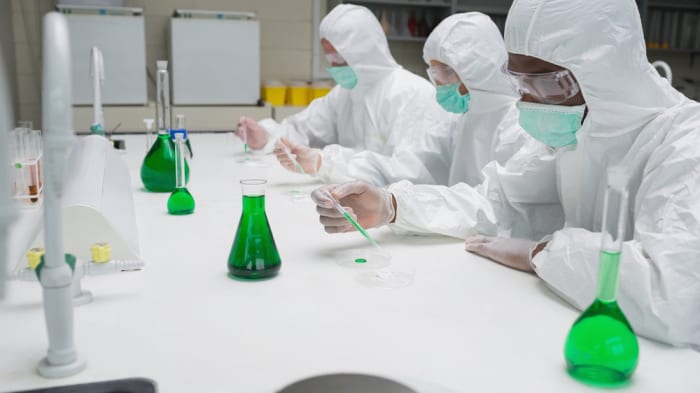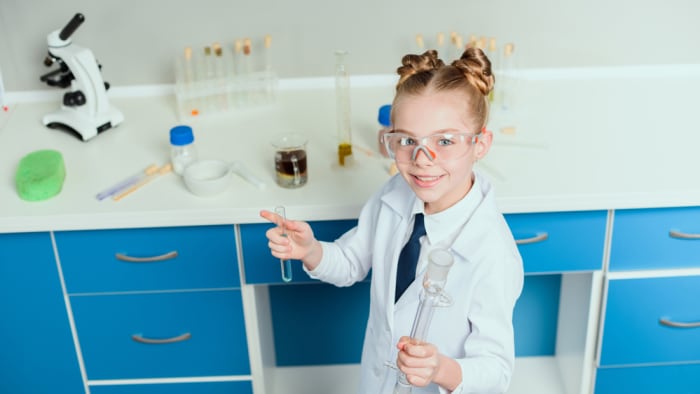Safety guide for conducting chemical reactions at home
How to carry out chemical experiments at home

Before you start working on chemical experiments at home, it’s important to make sure you observe the necessary safety measures. You should take care of storage of reagents and equipment, and the safety of participants. It’s easy to find the necessary information online, but you should also read the instructions for the reagents and equipment beforehand.
Let’s look at the list of rules that we should observe when we attempt to prepare substances at home.
Thoroughly familiarize yourself with the specifications of the objects and substances you may need during the experiment. You should read the instructions carefully (many substances may evaporate easily), and use them with care, as sometimes substances can release poisonous vapors or cause burns to the respiratory tract – make sure you know how to store substances properly. Sometimes problems may arise if storage rules are broken. At the very least, the substance will not cause the desired effect. The process may be unpredictable and so you cannot anticipate the consequences– make sure that all containers and devices are clean. Even traces of moisture may disrupt the course of the reaction. When mixing different types of substances in an experiment, it is important to have a fair idea of the effect they will cause – how the process will take place and what the product of the reaction will be. You should prepare a suitable container for it. You should also think about disposing of it afterwards (taking into account the physical state and chemical properties of the products of reactions). Depending on the chemical and physical properties of substances, you should take additional safety precautions. For example, if a substance is flammable, even light sources should be moved as far away as possible, and powders should be kept away from draughts and sources of mechanical impact.

Prepare additional protective equipment (gloves, protective glasses, breathing masks). There should be plenty of equipment available, so that the experiment does not have to be interrupted at an important moment because of unforeseen circumstances.
In any case, even if a simple and safe experiment is planned, you should always have a first-aid kit and necessary medical supplies at hand.
Read the instructions carefully, or even better watch a video of the experiment. Like this one:
This should help to give a clear idea of the effect you should expect (what the result should be and how it should take place). The result can sometimes be unexpected (an explosion, a flame), and you should be prepared. You should remember how substances interact. It is even worth paying special attention to nuances. Sometimes you can carry out an experiment properly, but an unforeseen reaction may take place from using a container made of unsuitable material – substances may react incorrectly, not react at all, or form subsidiary products.
Each stage contains a list of problems which may often arise when conducting the experiment – you should remember what to do in this situation.

Participants of the experiment should be informed about what assistance is required from them, so they know in advance what will be required at a crucial moment.
Even if this is a homemade solution which is commonly made, you should always inform others about safety precautions (an illustrative example: everyone who cooks at home often observes the reaction of vinegar with baking soda, but if you want to show this interesting effect to children, you should warn them beforehand not to taste the mixture, and also make sure it doesn’t get in their eyes).
Whatever discoveries you are planning to make, at the initial stage you should carefully follow the instructions and repeat the experiment procedure precisely. When adding a substance, even when you know what it will turn into, it is important to observe proportions precisely. If you add a large amount of one substance, the reaction may lead to the formation of completely different substances. Here you’ll find lots of safe experiments to carry out at home.
Working area

You shouldn’t have to ask why this aspect is so important for safety. Making a new substance requires sufficient space, and so everything should be organized according to the following rules:
- preliminary preparation requires cleaning the table thoroughly. Remove unnecessary items, wipe down surfaces and dispose of any garbage;
- ensure you have plenty of space. It will become clear why this is necessary as soon as you start the experiment: necessary items and reagents should be within reach, but they should not restrict your movement. Sometimes you need to add substances quickly, and so you can easily tip over things that are placed incorrectly;
- place the table in the middle of the room, far from draughts and sources of heat and electricity. If a product with a caustic odor may form, be close to a source of fresh air;
- think about where the people who are helping you will be;
- if you're using a device, then make sure you know how it works beforehand. If it uses batteries, then it's best to have spares ready.
Recommendations are simple, but sometimes people forget about these rules, or simply do not follow them. With such a careless attitude, even a safe experiment can easily lead to injuries. In any case, chemical reagents require careful handling.